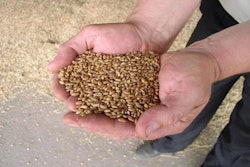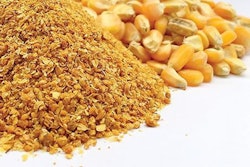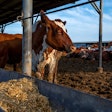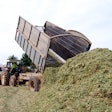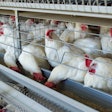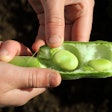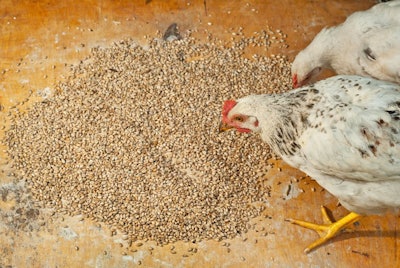
War in Ukraine has brought about a shortage of feed phosphates
With the war going on in Ukraine, the animal nutrition industry continues facing an increasing number of problems, one of which is scarcity of feed phosphates – such as mono- or dicalcium phosphates.
The commercial exogenous enzyme phytase is a partial solution to this problem as it can release a limited amount of phytate-bound phosphorus in grains that would otherwise end up in manure. It should be pointed here that monogastric animals such as poultry and pigs do not produce endogenous phytase and as such cannot utilize the total amount of phosphorus in their feeds. Hence, the addition of an exogenous phytase can release some of this otherwise unavailable phosphorus.
Among the many questions regarding the choosing of the right phytase is that of selecting between the two major types: namely 3- or 6-phytases. Here, we shall examine first this question from a theoretical/biochemistry point of view before we look at more practical data. For that, we begin by looking at the phytate molecule as shown in the graph below.
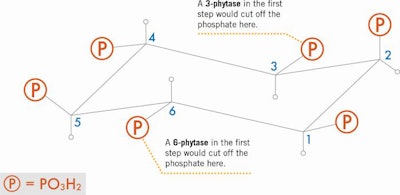
We see that a phytate molecule contains six phosphorus units, numbered 1 to 6. In simple terms, a 3-phytase starts the dephosphorylation at position 3’ on the inositol ring. In contrast, a 6-phytase will begin the same process at position 6’ (or the end phosphorus). Both types of phytase hydrolyze phytate in a stepwise manner until there are no available sites to continue clipping phosphorus. Thus, in theory, a 3-phytase cannot dephosphorylate phytate completely (when position 3 is no longer produced). In contrast, a 6-phytase (end phytase) will dephosphorylate it completely. Thus, in biochemistry terms, a 6-phytase can be considered as more effective than a 3-phytase in releasing phosphorus for the animal.
Under commercial conditions, results have not been so clear-cut when comparing these two types of phytase. In fact, this distinction is rarely used in marketing, and few recognize its importance. Perhaps this is because phytase has been applied always in diets containing sufficient inorganic phosphorus and/or because suppliers include extra phytase in a single dosage to overcome any slight inefficiency. It would be interesting to see now how such distinct products behave under marginal conditions of phosphorus supplementation or even in diets without any phosphate supplementation. For example, in a diet without any added phosphate, would a 6-phytase outperform a 3-phytase, all other variables being equal? Such a diet would certainly be deficient in phosphorus, especially for animals that have high requirements.
It would also be interesting to see how these two products behave at super-dosage levels (up to 10 times the normal dose), again in formulas that contain no additional phosphates for animals with high requirements. So far, we have seen that either product works as expected in all feeds for animals with low phosphorus requirements.



